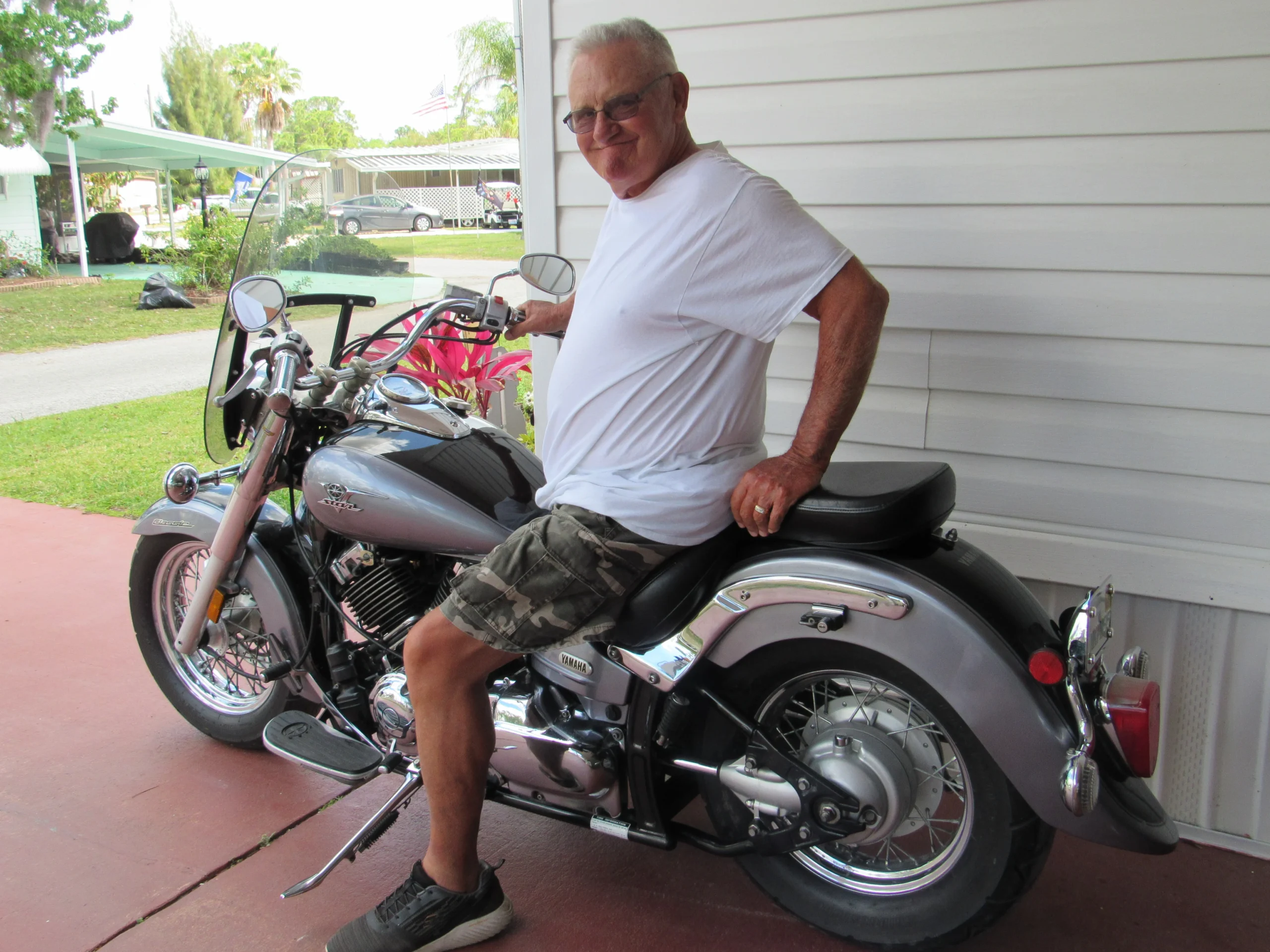Essential Tips on How to Turn Engine Manually on a VStar 1600
Taking care of a Yamaha VStar 1600 can be a fulfilling experience for motorcycle owners. Whether you’re troubleshooting an issue, performing routine maintenance, or simply exploring your bike’s mechanics, understanding how to turn the engine manually on a VStar 1600 is an essential skill. This article walks you through the process of safely and effectively turning the engine by hand.
Why Would You Need to Manually Rotate the Engine?
There are various situations where manually rotating the engine on your VStar 1600 is necessary:
- Valve Clearance Adjustments: Ensuring proper clearance between valves is key to a smooth-running engine, and manual rotation is vital for positioning the engine accurately.
- Timing Checks: Verifying proper alignment of the camshaft and crankshaft requires rotating the engine manually.
- Compression Testing: Turning the engine by hand is needed to assess cylinder compression.
- Engine Diagnostics: If your VStar 1600 isn’t starting or making strange noises, manually turning the engine can help identify potential issues.
- Preventive Maintenance: Regular internal checks, including inspection of the pistons and valves, often require manual engine rotation.
Necessary Tools for the Job
Before you begin the process, gather the following tools and items:
- Socket Wrench Set: Choose the appropriate socket size for the crankshaft bolt.
- Extension Bar: This will help you reach the crankshaft bolt in confined spaces.
- Breaker Bar (Optional): This tool provides additional leverage if the bolt is stuck.
- Gloves: Wear gloves to protect your hands while working.
- Flashlight: A flashlight will help illuminate hard-to-reach parts of the engine.
- VStar 1600 Service Manual: Always refer to your motorcycle’s service manual for specific instructions tailored to your model.
How to Turn the Engine Manually on a VStar 1600: Step-by-Step Instructions
Follow these steps carefully to manually rotate the engine on your VStar 1600:
1. Prepare the Motorcycle
- Ensure Stability: Position your motorcycle securely on a center stand or lift to keep it balanced. Wait for the engine to cool down before starting.
- Disconnect the Battery: For safety, disconnect the negative terminal of the battery to prevent accidental engine starts.
2. Find the Crankshaft Bolt
- Access the Engine Area: Remove any parts, such as the engine cover, that may obstruct access to the crankshaft bolt.
- Locate the Crankshaft Bolt: The crankshaft bolt is typically on the left side of the engine, near the flywheel.
3. Attach the Socket Wrench
- Fit the Socket: Secure the appropriate socket to your wrench or breaker bar.
- Use Extension Bar: If necessary, use the extension bar to reach the crankshaft bolt.
4. Rotate the Engine by Hand
- Rotate in the Correct Direction: Turn the crankshaft bolt clockwise. Rotating counterclockwise can cause damage to the timing chain and other components.
- Apply Even Pressure: Turn the bolt with steady, consistent pressure to avoid slipping and damage.
- Observe Engine Components: As you rotate, watch the movement of the camshaft, valves, and pistons to ensure they’re working as expected.
5. Align the Timing Marks
- Check the Timing: If you’re inspecting the timing, continue rotating until the timing marks on the crankshaft and camshaft align according to the VStar 1600 service manual.
6. Finish the Task
- Complete the Maintenance: Once the engine is in the desired position, carry out the necessary maintenance or inspection.
- Reassemble and Reconnect: Put back any parts you removed and reconnect the battery.
Helpful Tips for Success
- Consult the Service Manual: Your VStar 1600’s manual will provide crucial details such as torque specifications and other important instructions.
- Use Quality Tools: A well-fitting socket and durable wrench will prevent damage to the crankshaft bolt.
- Avoid Over-Tightening: When reassembling, tighten bolts just enough to secure them, without over-tightening to prevent thread damage.
- Work in a Well-Lit Space: Adequate lighting will help you clearly see and inspect the engine components.
- Feel for Resistance: If you encounter resistance while rotating the engine, stop and inspect for any blockages or issues.
Common Pitfalls to Avoid
- Incorrect Rotation Direction: Always turn the crankshaft clockwise as per manufacturer guidelines to avoid damaging the engine components.
- Forceful Rotation: If the engine feels stuck, avoid forcing it. Check for any blockages or mechanical issues before proceeding.
- Neglecting Safety: Failing to disconnect the battery or securely stabilize the bike can lead to accidents.
- Using Incorrect Tools: Ensure you use the correct socket size and avoid using weak or poorly-fitted wrenches, which could strip the crankshaft bolt.
Troubleshooting Issues During Manual Engine Rotation
If you run into issues while turning the engine by hand, consider these possibilities:
- Seized Engine: If the engine does not rotate, it may be seized, which could be due to insufficient oil or extended periods of inactivity.
- Obstructed Parts: Internal debris or misaligned components can prevent smooth rotation of the engine.
- Damaged Crankshaft Bolt: A worn or damaged crankshaft bolt might need replacement before you can proceed further.
Key Facts
- Purpose of Manual Engine Rotation: Turning the engine manually on a VStar 1600 is essential for various tasks like adjusting valve clearance, checking timing, performing compression tests, and diagnosing engine issues.
- Essential Tools: You’ll need a socket wrench set, extension bar, breaker bar (optional), gloves, a flashlight, and the VStar 1600’s service manual to perform the task safely and effectively.
- Engine Positioning: The engine should be rotated clockwise when manually turning the crankshaft bolt to avoid damaging the timing chain or other components.
- Crankshaft Bolt Location: The crankshaft bolt is typically located on the left side of the engine, near the flywheel. Accessing it may require removing engine covers or other parts.
- Safety Precautions: Always disconnect the motorcycle’s battery before starting to prevent accidental starts, and ensure the bike is securely placed on a center stand or lift.
- Monitoring Engine Components: As you manually rotate the engine, observe the movement of camshaft, valves, and pistons to ensure they function correctly.
- Timing Marks: When checking the engine timing, rotate the crankshaft until the timing marks on both the crankshaft and camshaft align according to the VStar 1600’s service manual.
- Common Mistakes: Avoid turning the engine counterclockwise, forcing the rotation if there’s resistance, skipping safety steps, or using improper tools.
- Troubleshooting: If the engine doesn’t rotate smoothly, investigate for issues such as a seized engine, obstructed components, or a damaged crankshaft bolt.
- Maintenance and Diagnostics: Manually turning the engine allows you to inspect internal components (such as valves and pistons) and perform necessary maintenance to keep the VStar 1600 in optimal condition.
Conclusion
Mastering how to turn engine manually on a VStar 1600 is an important skill for any motorcycle owner. Whether for routine maintenance or diagnosing mechanical issues, manually rotating the engine can ensure your bike remains in top condition. By following the steps outlined in this guide, you can confidently perform this task and keep your VStar 1600 running smoothly.
Regular attention and care will help extend the life of your motorcycle, ensuring it continues to perform reliably. Whether you’re a beginner or a seasoned mechanic, this process will empower you to maintain control over your bike’s mechanical health.
FAQs
1. Why should I manually rotate the engine on my VStar 1600?
Manually turning the engine is essential for tasks like adjusting valve clearance, inspecting engine timing, testing compression, diagnosing issues like unusual noises, and performing general maintenance. It allows you to access and monitor the engine’s internal components without starting it.
2. What tools do I need to turn the engine manually on a VStar 1600?
You’ll need a socket wrench set with the appropriate socket for the crankshaft bolt, an extension bar for better access, a breaker bar for additional leverage (optional), gloves to protect your hands, a flashlight for visibility, and the VStar 1600’s service manual for reference.
3. Which direction should I turn the engine manually?
Always rotate the crankshaft bolt in a clockwise direction. Turning it counterclockwise could damage engine components such as the timing chain or tensioner.
4. How do I find the crankshaft bolt on my VStar 1600?
The crankshaft bolt is typically located on the left side of the engine, near the flywheel. You may need to remove the engine cover or any other obstructions to access it.
5. Is it necessary to disconnect the battery before turning the engine manually?
Yes, for safety reasons, you should always disconnect the negative terminal of the battery before attempting to manually turn the engine. This prevents any accidental engine starts or electrical issues while you’re working.
6. What happens if I force the engine to rotate and it resists?
If the engine resists rotation, do not force it. Forcing the engine could cause damage to internal components. Instead, stop and inspect for obstructions, a seized engine, or damaged parts before continuing.
7. Can I turn the engine manually if my VStar 1600 is not starting?
Yes, you can manually rotate the engine to troubleshoot and check for issues such as seized components, misaligned parts, or lack of lubrication. It helps you identify the root cause of the problem.
8. What should I do if the engine doesn’t rotate smoothly?
If the engine feels stuck or does not rotate smoothly, stop immediately and investigate the issue. It could be due to a seized engine, misaligned internal components, or an obstructed part.
9. How do I check the timing when turning the engine manually on a VStar 1600?
To check the timing, rotate the engine until the timing marks on both the crankshaft and camshaft align as specified in your VStar 1600’s service manual.
10. Are there any common mistakes to avoid when turning the engine manually?
Yes, avoid rotating the engine in the wrong direction (counterclockwise), using incorrect tools (wrong socket size or weak wrench), skipping safety precautions, or forcing the engine if it resists movement. Always refer to the manual for guidance.
11. How often should I manually turn the engine for maintenance?
It’s a good idea to manually turn the engine as part of regular maintenance checks—especially if you’re adjusting valves, checking timing, or performing compression tests. Regular manual rotation can help identify potential issues early on.
Stay updated with the latest news and trends here at My Reading Manga!







